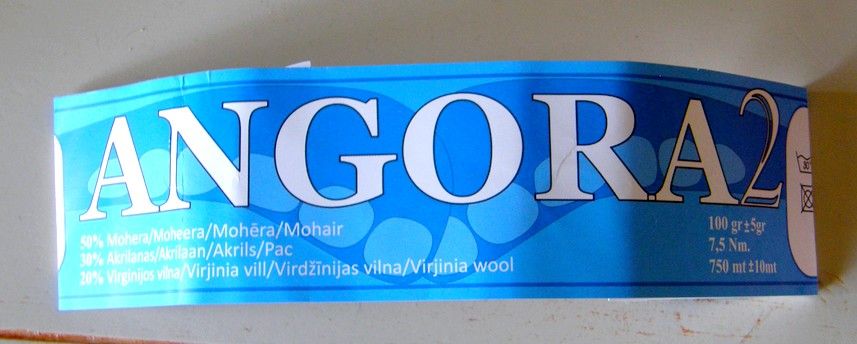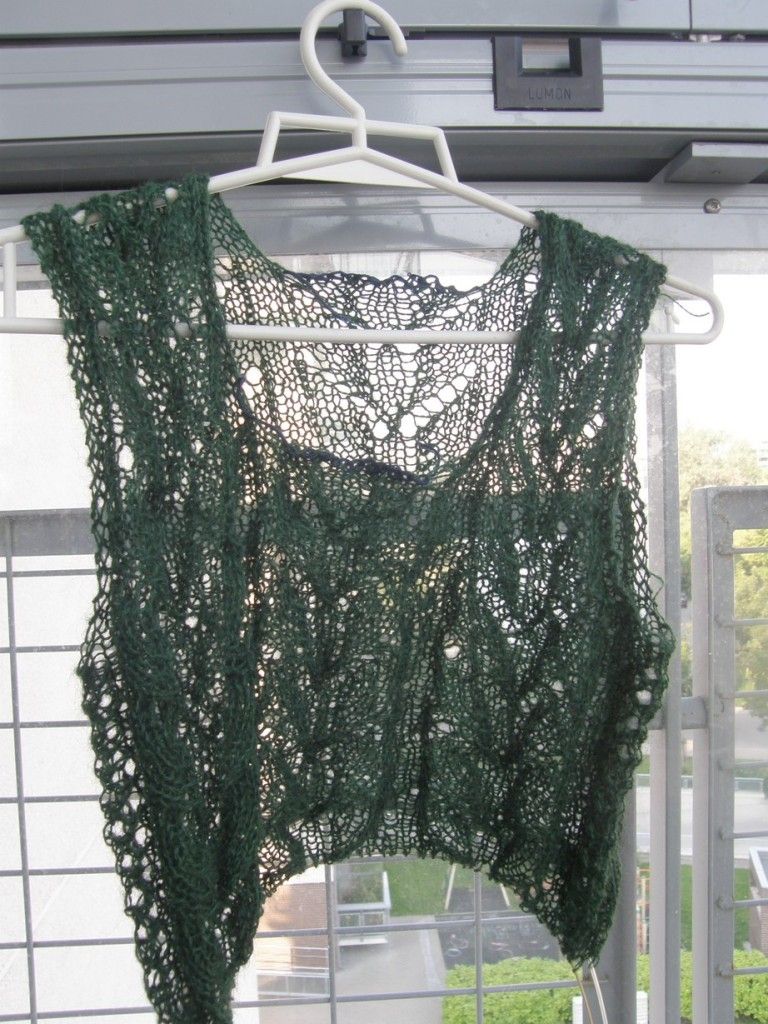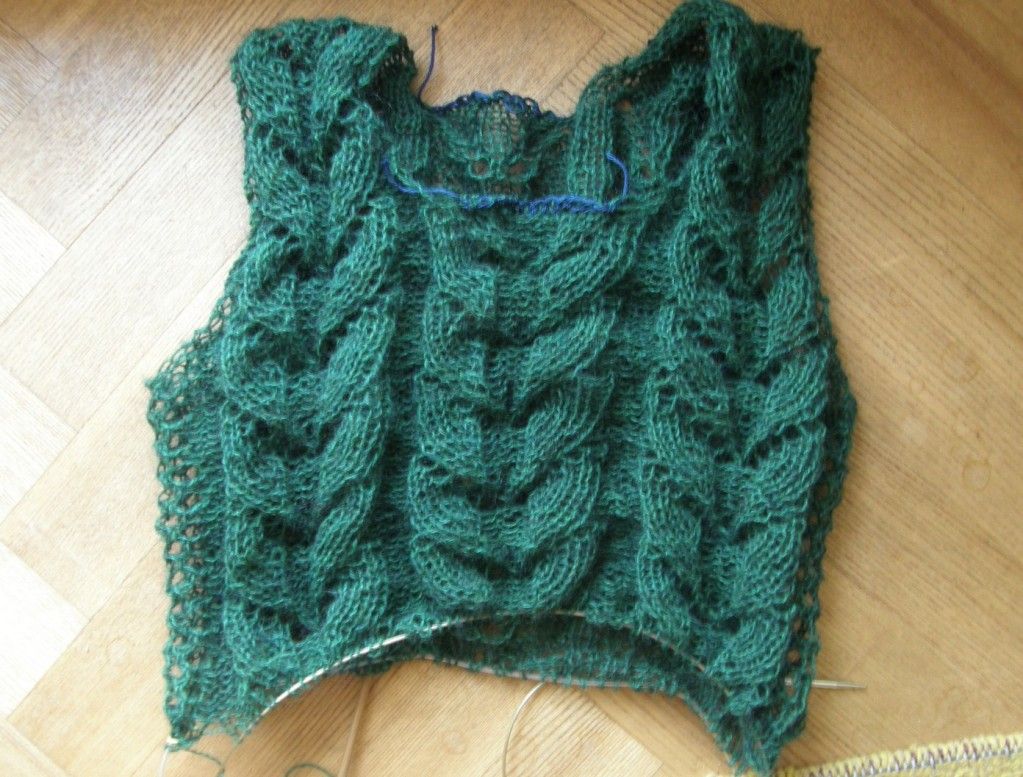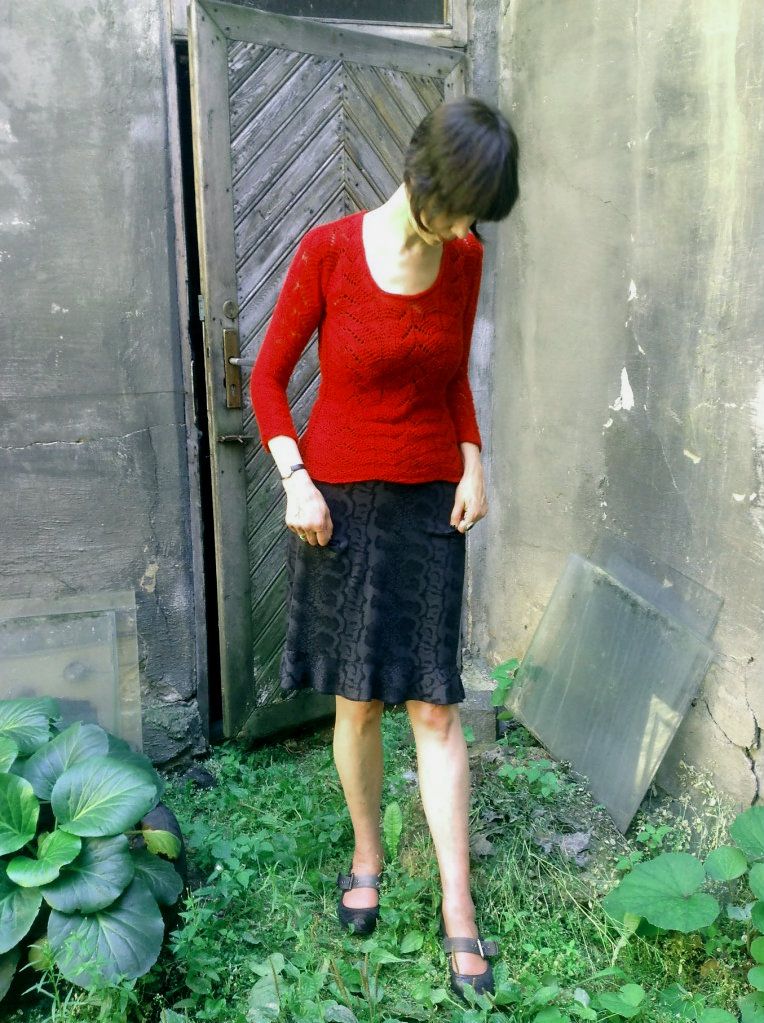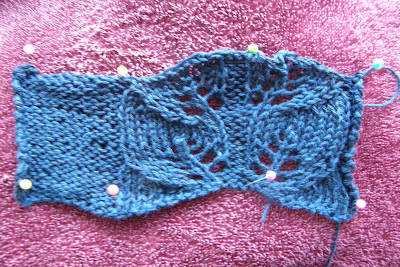Leedus on üks lõngavabrik Midara. Selle toodetud peenike lõng Micro on tuttav neile, kes koovad haapsalu salle jms. Ise olen kudunud Roma-nimelisest villasest lõngast, sellest sai eelmisel suvel valmis hõlmik. Peale nende jäi mulle silma Angora 2. Angora 1 pole olemas ja koostises pole angoorat. Kuid see pole oluline. Koostis on 50 % mohäär, 30 % akrüül ja 20 % vill, metraaž 100 g/750 m ja, mis peamine, on palju värve. Võib küll kurta Midara toodangu üle jms, kuid mõned firmad võiksid värvikaartidest malli võtta. Sellest Angora 2-st olen rääkinud Leedus olles üsna palju. Ravelrys on sellest kootud, võib sisestada Midara, valida sealt Angora 2 ja vaadata. Nüüd otsustasin järele proovida. Lõng meenutab mohääri, kuid puudub karvasus. Vardaga nr 4 tuleb kena pitsiline kude.
In Lithuania there is a yarn factory called Midara. One of its products, a lace weight yarn Micro is familiar to those who knit Haapsalu scarves. I have used Roma fine wool and made a wrap jacket last summer. In addition to those my attention was caught by Angora 2. Angora 1 does not exist and the yarn does not contain any angora fibers. But this is irrelevant. The fiber content is as follows: 50 % mohair, 30 % acrylic and 20 % wool, 100 g/750 m and, what is important, it is available in many colours. One can criticize Midara products and so on but some companies could learn from their colour cards. While in Lithuania, I have been talking quite a lot about Angora 2. There are porjects on Ravelry, just type Midara and choose Angora 2 from the list. Now I decided to finally try it. The yarn reminds of mohair but lacks is hairyness. With 4 mm needles you get a nice lace fabric.
Olen ilmselt pitsiliste sviitrite lainel. Elie alustasin ühe mustriga, mis oli mul ammu meeles. Tuli välja, et muster sobib suurepäraselt, kudum edeneb. Plaanis on suur krae.
Probably I am in the lace sweaters mood. Yesterday I started with a lace pattern that I had had on my mind long ago. It appears that the pattern fits perfectly with the yarn and the knit is progressing. I am thinking about a large collar.
Tegelik värv on pisut tumedam, kui viimasel pildil.The real colour is somewhat darker than in the last picture.
